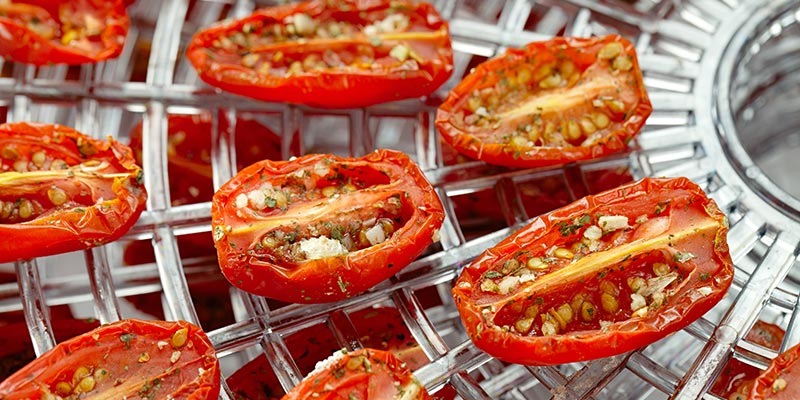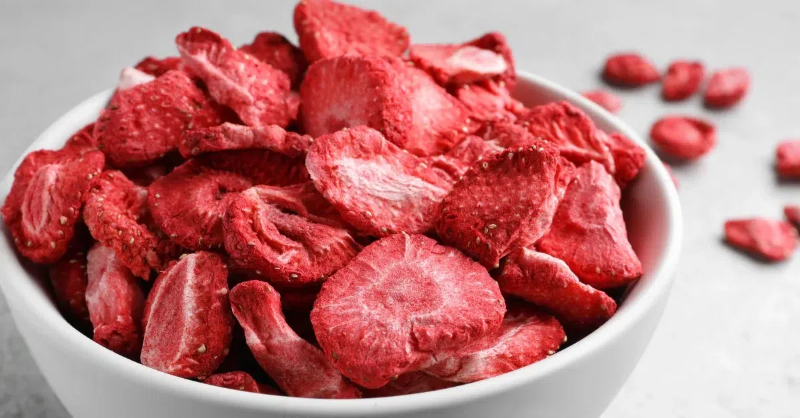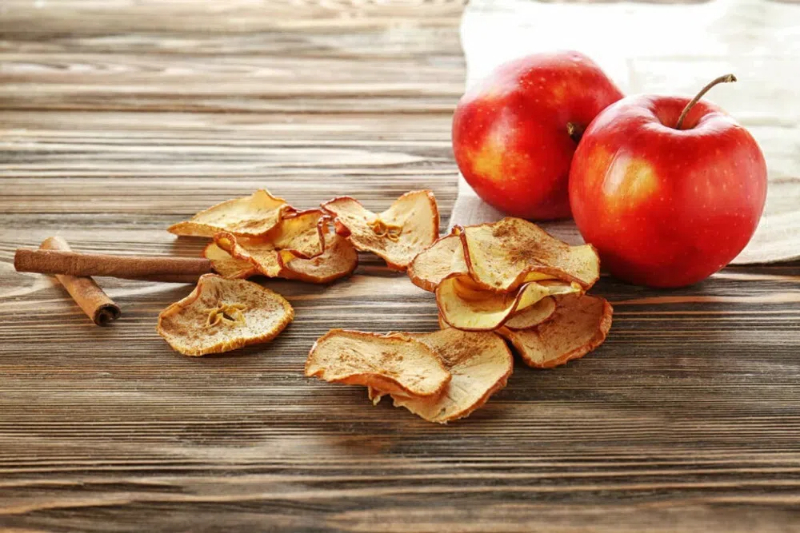
Content Menu
● Understanding Freeze Drying vs. Dehydrating
● The Benefits of Freeze Drying
● Preparing for Freeze Drying with a Dehydrator
● Using the Dehydrator
● Transitioning from Dehydrating to Freeze Drying
● Rehydrating Freeze-Dried Foods
● Additional Tips for Successful Dehydration
● Common Mistakes to Avoid
● Conclusion
● FAQ
>> 1. What foods are best suited for freeze drying?
>> 2. Can I use my dehydrator for freeze drying?
>> 3. How long do freeze-dried foods last?
>> 4. Is there any loss of nutrients during dehydration?
>> 5. Can I rehydrate freeze-dried foods quickly?
● Citations:
Freeze drying food is an excellent method for preserving nutrients and extending shelf life. While many people associate freeze drying with specialized equipment, it's essential to understand that a dehydrator can also play a role in this process. This article will guide you through the steps of freeze drying food using a dehydrator, explain the differences between freeze drying and dehydrating, and provide tips for optimal results.

Understanding Freeze Drying vs. Dehydrating
Before diving into the process, it's crucial to clarify the differences between freeze drying and dehydrating:
- Freeze Drying: This method involves freezing food at extremely low temperatures (around -40°F) and then using a vacuum to remove moisture through sublimation. The result is food that retains its original shape, flavor, and nutritional value.
- Dehydrating: This process uses heat to evaporate moisture from food. While it effectively preserves food, it can alter the texture and flavor due to the cooking process involved.
| Feature | Freeze Drying | Dehydrating |
| Temperature | Extremely low (-40°F) | Moderate heat (typically 130°F) |
| Moisture Removal | 98-99% | 70-90% |
| Nutritional Retention | High (up to 97%) | Moderate (some loss) |
| Shelf Life | 15-25 years | 1 year or less |
The Benefits of Freeze Drying
Freeze drying offers several advantages over traditional dehydrating methods:
- Nutrient Preservation: Freeze-dried foods retain their nutritional content better than dehydrated foods. Vitamins and minerals remain intact, making them a healthier option.
- Longer Shelf Life: Foods preserved through freeze drying can last significantly longer than dehydrated varieties, making them ideal for long-term storage.
- Versatility: Almost any type of food can be freeze-dried, including fruits, vegetables, meats, and even full meals.
Preparing for Freeze Drying with a Dehydrator
While a dehydrator cannot fully replicate the freeze-drying process, it can be used effectively as part of the preparation. Here's how to get started:
1. Select Your Food: Choose fresh fruits, vegetables, or cooked meals that you want to preserve. Ensure they are ripe and free from blemishes.
2. Pre-Treat If Necessary: Some foods may require pre-treatment to enhance flavor or prevent browning. For example:
- Fruits: Soak in lemon juice or ascorbic acid solution.
- Vegetables: Blanch in boiling water for a few minutes.
3. Cut into Uniform Pieces: Slice food into uniform pieces to ensure even drying. Smaller pieces will dry faster.
4. Arrange on Dehydrator Trays: Place the prepared food on the dehydrator trays in a single layer without overlapping.
Using the Dehydrator
1. Set Temperature: Adjust your dehydrator to a low temperature setting (between 125°F and 135°F). This helps maintain the integrity of the food while removing moisture.
2. Monitor Drying Time: Depending on the type of food and thickness of pieces, drying times will vary:
- Fruits may take 6-12 hours.
- Vegetables can take 4-8 hours.
- Cooked meals may take longer; check periodically until fully dried.
3. Check for Doneness: Food is done when it feels dry and crispy. There should be no moisture left in the pieces.
Transitioning from Dehydrating to Freeze Drying
After using your dehydrator, you can further enhance preservation by simulating aspects of freeze drying:
1. Cool Down: Allow the dehydrated food to cool completely before packaging. This prevents condensation when sealed.
2. Vacuum Seal: Use vacuum-sealed bags or containers to minimize air exposure. This step is crucial for extending shelf life.
3. Store Properly: Keep vacuum-sealed items in a cool, dark place to maintain freshness.

Rehydrating Freeze-Dried Foods
When you're ready to use your preserved foods, rehydration is simple:
1. Add Water: For fruits and vegetables, add water at room temperature or slightly warm water.
2. Wait: Allow time for rehydration—typically 15-30 minutes depending on the food type.
3. Cook as Desired: Once rehydrated, you can incorporate these foods into your meals as you would fresh ingredients.
Additional Tips for Successful Dehydration
To ensure you achieve the best results when using a dehydrator for freeze drying preparation, consider these additional tips:
- Avoid Overloading Trays: It's essential not to overcrowd your dehydrator trays; this allows proper air circulation for even drying.
- Rotate Trays: If your dehydrator has multiple trays, rotate them halfway through the drying process to ensure uniform results.
- Use Quality Ingredients: The fresher the ingredients you start with, the better your final product will be after dehydration.
- Experiment with Seasonings: You can add spices or herbs during dehydration for enhanced flavors in your finished products.
Common Mistakes to Avoid
1. Not Checking Temperature Settings: Always ensure that your dehydrator is set at the correct temperature for the type of food you are processing to avoid case hardening or under-drying.
2. Ignoring Storage Conditions: After dehydration, improper storage can lead to spoilage; always use airtight containers and store them in cool, dark places.
3. Skipping Pre-Treatment Steps: Pre-treating fruits and vegetables can significantly affect their color and flavor retention during dehydration; don't skip this step if recommended.
Conclusion
Using a dehydrator as part of your food preservation strategy can yield excellent results when combined with vacuum sealing techniques for long-term storage. While it may not fully replicate freeze drying, it offers a practical approach for those looking to preserve their harvests or leftovers effectively.
By understanding both processes' nuances and benefits, you can make informed decisions about how best to preserve your food while retaining its flavor and nutritional value.

FAQ
1. What foods are best suited for freeze drying?
Most fruits, vegetables, meats, dairy products, and even complete meals can be freeze-dried effectively.
2. Can I use my dehydrator for freeze drying?
While a dehydrator cannot achieve true freeze drying results, it can prepare foods by removing moisture before vacuum sealing them for longer storage.
3. How long do freeze-dried foods last?
Properly vacuum-sealed freeze-dried foods can last between 15 to 25 years when stored in cool, dark conditions.
4. Is there any loss of nutrients during dehydration?
Yes, some nutrients may be lost during dehydration due to heat exposure; however, many minerals remain intact.
5. Can I rehydrate freeze-dried foods quickly?
Yes! Most freeze-dried foods rehydrate quickly by soaking in water for about 15-30 minutes depending on the type of food.
Citations:
[1] https://www.webmd.com/diet/dehydrating-food-good-for-you
[2] https://www.healthline.com/nutrition/dehydrated-food
[3] https://backcountryfoodie.com/how-to-dehydrate-and-freeze-dry-strawberries-for-backpacking-meals/
[4] https://www.bestbuy.com/discover-learn/10-reasons-to-buy-a-food-dehydrator/pcmcat1634332391134
[5] https://homesteadingfamily.com/preservation-101-intro-to-dehydrating-food/
[6] https://candyjan.com/blogs/news/can-you-make-freeze-dried-candy-in-a-dehydrator
[7] https://brodandtaylor.com/pages/dehydrating
[8] https://www.rei.com/learn/expert-advice/how-to-dehydrate-food.html
[9] https://practicalselfreliance.com/freeze-dry-food/
[10] https://www.freshoffthegrid.com/dehydrating-food/











